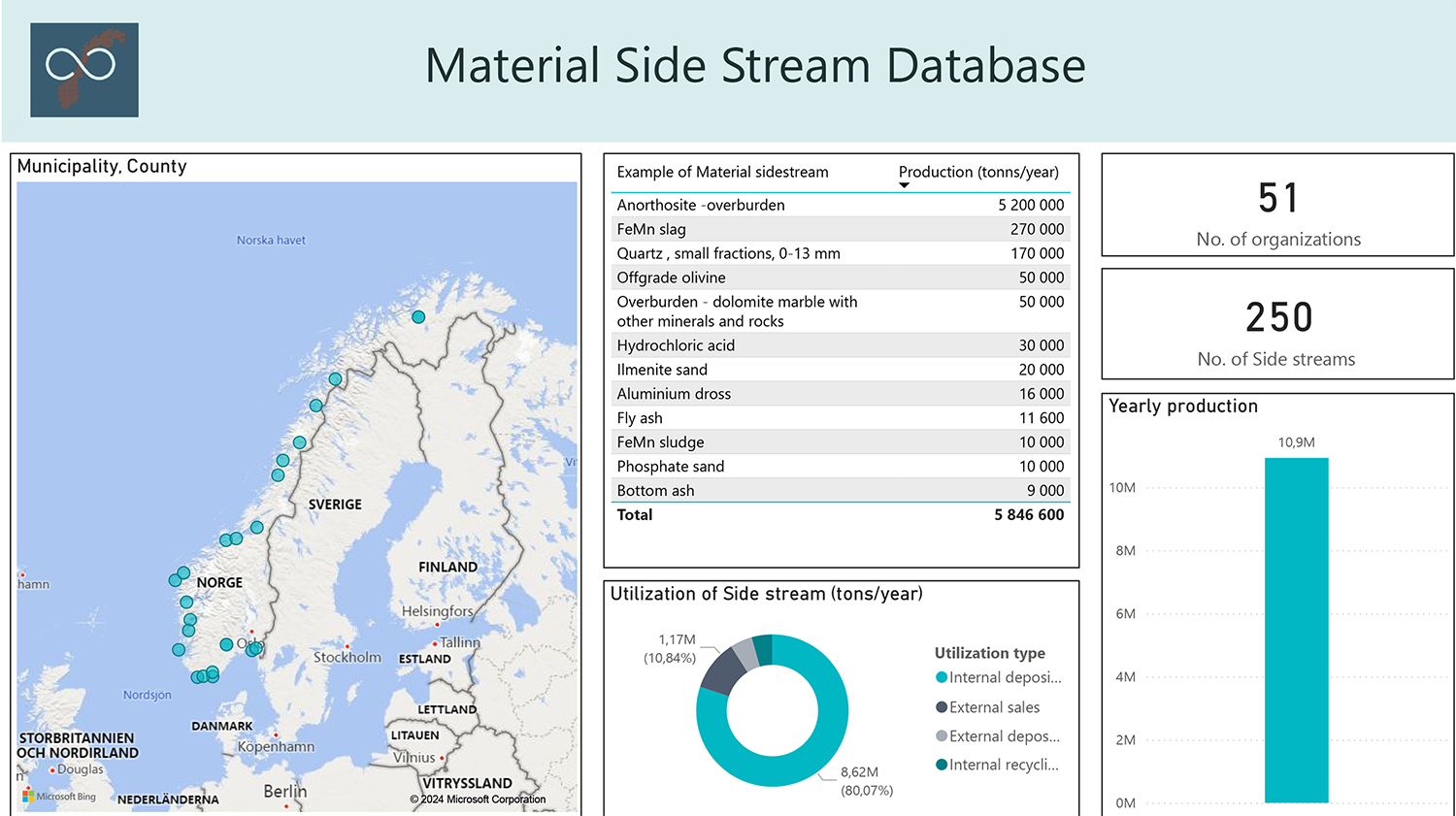Norway and the world need a better policy for the circular economy
Critical and strategic raw materials are essential for success in the green and digital transition.
In Norway 10 million tons annually of materials from the process industry remain unused potential. These could be used together with new partners to develop new business opportunities.
In 2020, the Eyde Cluster was commissioned by the Ministry of Climate and Environment to map the material side streams from the Norwegian process industry. READ MORE HERE
Some side streams are currently being successfully utilized. However, with new incentives and tools, the potential is enormous.
Database
The Eyde Cluster was commissioned by the Ministry of Climate and Environment (KLD) to create a mapping of side streams from the process industry. In total, 10 million tons of materials are mapped annually, distributed across approximately 250 side streams. About 9 million tons of this is currently deposited internally on the companies' premises. The remainder is either sold, recycled, or deposited externally.



These are annual production. The previously deposited materials also have a large potential for utilization.
Possibilities for the reused materials
The raw materials that can be recycled are critical for the development of wind and solar energy. They are crucial for most energy storage (batteries, electrolysis/hydrogen) and for the digitization of society (data storage, infrastructure, IT equipment).
The battery industry is growing rapidly. Currently, little material is recycled from batteries, so there is also great potential here. The current collector on the cathode side is made of aluminum. There are approximately 42,000 tons/year of unused material streams in Norway that contain aluminum. Manganese is usually part of the cathode in Li-ion batteries. There are approximately 800,000 tons/year of manganese-containing side streams from the Norwegian process industry.
Microsilica from Elkem was a major dust problem until the 1980s. Today, it is an important product for the company that strengthens concrete. Silica Greenstone from Eramet has traditionally been used as a filler material - replacing gravel and crushed stone. Research shows that it can alternatively be used as a soil enhancer in agriculture, as a base layer in roads (including asphalt), and as raw material in cement and concrete production.
https://geoforskning.no/et-allsidig-restprodukt/ (Norwegian)
Download Prosess21`s report (Norwegian)
The use of recycled material in concrete and other products can lead to significant CO2 reductions.
New policy are needed to increase valorization
The potential is significant. However, to succeed in recycling these valuable materials, new instruments and better framework conditions are needed and currently under development.
Here is EUs Critical Raw Materials Act
Continuation and expansion of side stream mapping
Detailed information on chemical composition, quantity, etc., has been collected in a database. There is a need for further financial support to update and expand this database. It should also be extended to include other Nordic countries, or similar databases should be created in these countries. This would become a valuable tool for identifying the most suitable side streams for recycling critical raw materials and serve as a useful matchmaking tool between companies. The Eyde Cluster, along with its partners across the Nordic region and Europe, has the expertise to accomplish this.

Utilizing available materials will make it possible to delay the use of seabed minerals and instead utilize the available resources in existing material side streams and landfills.
Kontakt
Relevant glossary:
- Waste-streams: streams sent to deposits or to garbage/waste incineration for heat recovery
- Bi-products: streams remanufactured to a new product that has a marked, i.e. Microsilica
- Sidestreams: material, energy or gas streams with a potential to be a bi-product or a raw material in another process.
Siste nyheter fra fagområdet:

CIRC på Eramet: Det er et teoretisk potensial for helårlig tomatproduksjon

